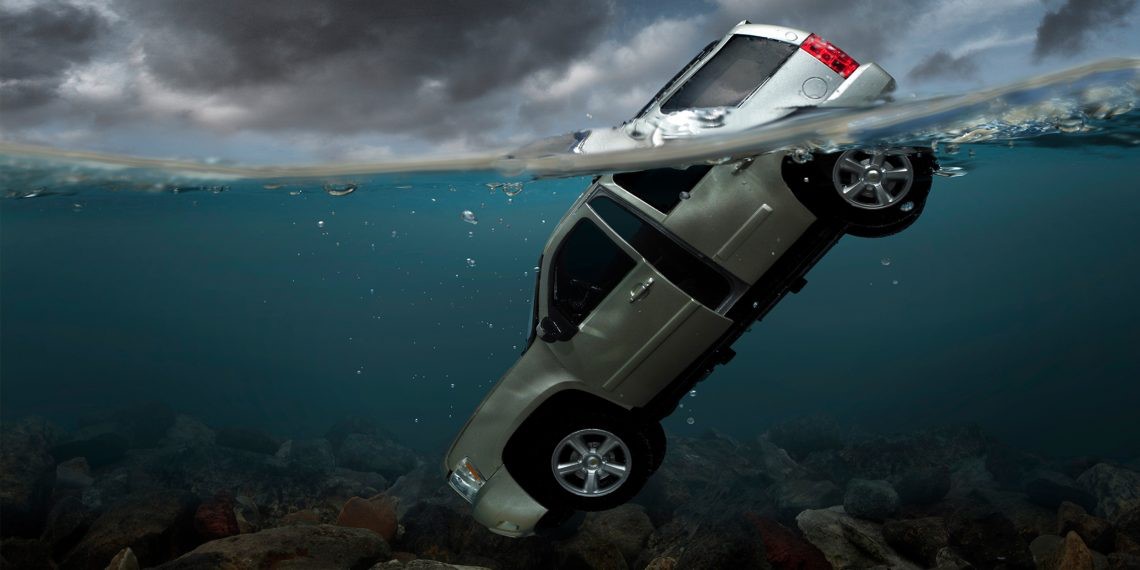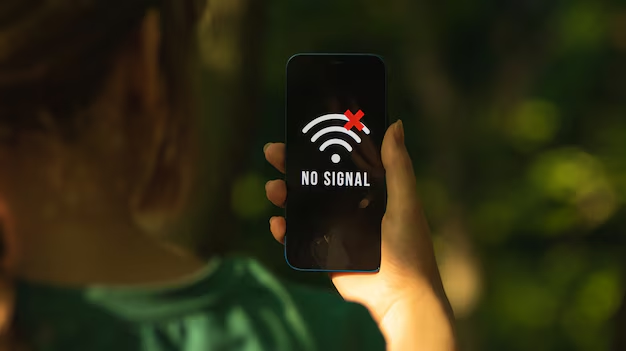Imagine this: You’re driving, and suddenly your car veers off the road and plunges into water. Panic is a natural first reaction, but it’s crucial to fight it. The most important thing to remember is to act quickly and decisively. You typically have only 60 to 120 seconds before a vehicle becomes fully submerged, and some sources suggest even less time in rapidly sinking cars. This isn’t a time for trial and error; it’s a time for a practiced, efficient escape.
Understanding the Danger: Hydrostatic Pressure and Electrical Failure
When a vehicle enters water, two major factors come into play:
- Hydrostatic Pressure: As the car sinks, the water pressure on the outside of the doors rapidly increases. This hydrostatic pressure can make it impossible to open the doors once the water level rises significantly, even if the locks are disengaged. This is why attempting to open the door first is often a fatal mistake.
- Electrical Failure: Modern vehicles rely heavily on electrical systems. Once water floods the electrical components, power windows, door locks, and even interior lights can fail. This failure can happen surprisingly quickly.
Historically, older cars were heavier and often sank more slowly, allowing more time for escape. Modern vehicles, with lighter materials and more complex electronics, can sink faster and experience quicker electrical failure, making immediate action even more critical.
The “SEATBELT, WINDOW, CHILDREN, OUT” (SWCO) Method
Emergency responders and survival experts often recommend the SWCO method (some variations exist, but the core principle is the same) as the most effective sequence for escape. This method prioritizes the most critical actions in the correct order.
Step 1: SEATBELT – Unbuckle Immediately
This is your absolute first action. The moment your vehicle hits the water, before you even fully comprehend what’s happening, unbuckle your seatbelt.
- Why it’s first: Your seatbelt, while vital for crash safety, will hinder your escape in water. You need to be free to move without restriction.
- Action: Reach for the release button and press it firmly. If it’s jammed, or you’re disoriented, try to unclip it manually.
Step 2: WINDOW – Open or Break the Nearest Window
This is the most critical step. Do not attempt to open the doors.
- Why windows over doors: As mentioned, hydrostatic pressure will prevent doors from opening once water reaches a certain level, usually just past the windows. Power windows, however, often work for a short period after submersion. Studies have shown they can function for up to 30-60 seconds in some cases.
- Action:
- Attempt to open the window: Your first priority is the driver’s side window or the nearest side window. Use the power window switch immediately.
- If power windows fail or you have manual windows: You must break the window.
- Use a window breaker (escape tool): This is by far the most effective and recommended method. A dedicated vehicle escape tool (also known as a car escape tool or safety hammer) typically combines a sharp point for breaking glass and a blade for cutting seatbelts. Keep it easily accessible, not in the glove compartment or trunk.
- How to use a window breaker: Aim for the corner of a side window. Do NOT aim for the windshield or rear window; these are often laminated and much harder to break. Side windows are usually tempered glass and will shatter into small, blunt pieces.
- If no escape tool: Look for a heavy, sharp, or pointed object within reach. This could be a headrest post (pull the headrest out and use the metal prongs), a sturdy key, or a heavy flashlight. Strike forcefully at the edge or corner of the side window.
- What about kicking? Kicking a car window is generally ineffective. You need a concentrated point of force to shatter tempered glass.
Step 3: CHILDREN – Unbuckle and Push Children Out
If you have children in the car, they are your next priority.
- Order of children: Start with the oldest child who can swim or follow instructions, or the child closest to an open window. Then move to the youngest.
- Unbuckle them: Unbuckle their car seats or seatbelts. This can be challenging in a stressful situation, but it’s essential.
- Push them out: Once unbuckled and the window is open, push them through the opening. Tell them to swim to the surface.
- Infants/Toddlers: If you have an infant in a rear-facing car seat, consider whether it’s faster to unclip the entire car seat from its base and push the child (still in the seat) out first. This keeps them contained and makes it easier to guide them to the surface. However, this is a highly situational decision.
Step 4: OUT – Exit the Vehicle
Once windows are open and children are out, it’s your turn to escape.
- Take a deep breath: Before submerging completely, take a final deep breath.
- Swim out: Push yourself out through the open window. Swim upwards towards the surface.
- Don’t wait for equalization: There’s a common myth that you should wait for the car to fill with water to equalize pressure and then open the door. This is dangerous and time-consuming. The pressure difference is negligible once the water reaches your chest, and by then, the electrical system may have failed, and doors will be impossible to open due to hydrostatic pressure. Focus on the windows immediately.
Important Considerations and Preparedness
- Keep a Vehicle Escape Tool Accessible: This is perhaps the single most important preparation. Store it where you can easily grab it, such as clipped to your sun visor, on the dashboard, or in the center console. Do not bury it in the glove compartment.
- Practice (Mentally): Mentally rehearsing these steps can significantly improve your response time in a real emergency. Imagine the scenario and walk through the SWCO method in your mind.
- Know Your Car: Understand how your power windows work and how to quickly release your seatbelt.
- Do Not Attempt to Rescue Belongings: Your life is worth more than any personal item. Leave everything behind.
- What if the Car Rolls Over? If the vehicle lands upside down, the same principles apply. Unbuckle, find a window, break it, and push yourself out. Orientation underwater can be disorienting; try to remember which way is up (air bubbles will always rise).
- After Escaping: Once out, swim away from the sinking vehicle to avoid being pulled down by any currents or suction. If possible, find something to cling to for buoyancy.
The threat of a sinking vehicle is low, but the consequences are extremely high. By understanding the dynamics of such an event and having a clear, actionable plan like the SWCO method, you dramatically increase your chances of survival. Being prepared means having the right tools and the right knowledge.
Frequently Asked Questions (FAQ)
Q1: What is the most common mistake people make when their car is sinking?
A1: The most common and dangerous mistake is attempting to open the door first. Due to hydrostatic pressure, the doors become impossible to open once the water level rises significantly, wasting precious seconds and making escape much harder.
Q2: Will my power windows still work underwater?
A2: Yes, often for a short period. Studies suggest that power windows can continue to function for 30 to 60 seconds (or even slightly longer in some cases) after a vehicle enters water. This is why opening the window immediately is critical before the electrical system fails.
Q3: What is a vehicle escape tool and why do I need one?
A3: A vehicle escape tool (also known as a car escape tool or safety hammer) is a small device designed to help you escape a car in an emergency. It typically features a pointed tip for breaking tempered glass windows and a sharp blade for cutting jammed seatbelts. You need one because it is the most effective way to break a car window quickly when power windows fail.
Q4: Where should I keep my car escape tool in my vehicle?
A4: Keep your car escape tool readily accessible, not in the trunk or glove compartment. Ideal locations include clipped to the sun visor, on the dashboard, or in the center console within arm’s reach.
Q5: Should I wait for the car to fill with water before trying to open the door?
A5: No, absolutely not. This is a dangerous myth. Waiting for the car to fill with water wastes critical time, and by then, the electrical system will likely have failed, and the doors will be impossible to open due to external water pressure. Focus on opening or breaking a window immediately.






